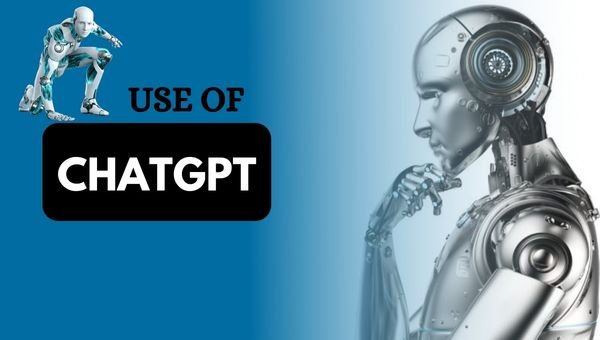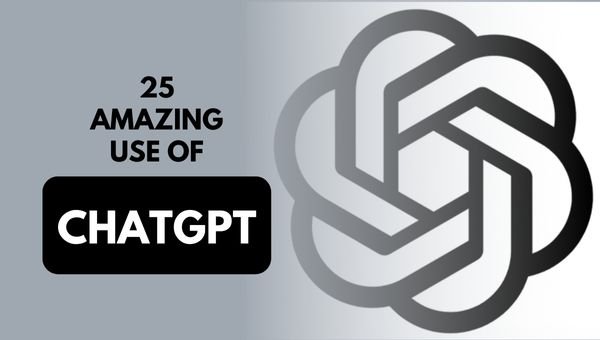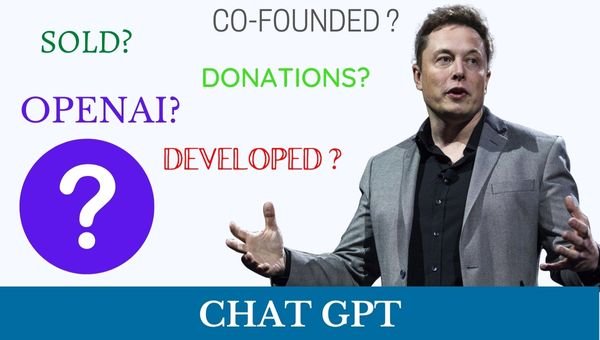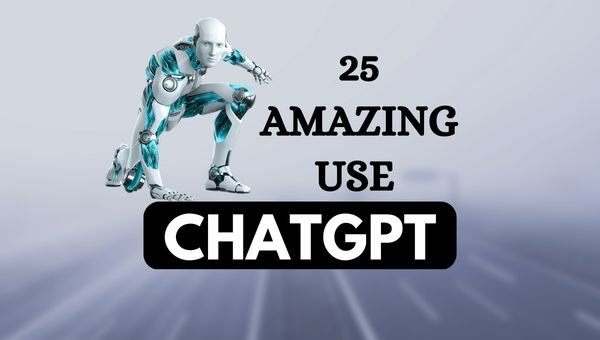✅ What is ChatGPT
ChatGPT is a variant of the popular language generation model GPT-3 (short for “Generative Pre-trained Transformer 3“) developed by OpenAI. Like GPT-3, ChatGPT is designed to generate human-like text, but it has been specifically optimized for chatbot and conversational applications. This means that ChatGPT is able to generate responses to user input in a way that is more natural and human-like compared to other chatbots that rely on pre-written responses or simple rules.
One of the key features of ChatGPT is its ability to generate contextually appropriate responses. This means that it is able to take into account the context of the conversation and generate responses that are relevant to the current topic of discussion. For example, if the user asks a question about the weather, ChatGPT will be able to generate a response that relates to the weather, rather than a response that is unrelated to the conversation.
In addition to generating relevant responses, ChatGPT is also able to generate responses that are personalized to the user. This means that it can take into account information about the user, such as their location or interests, and generate responses that are tailored to their specific needs or preferences.
✅ Use of ChatGPT
There are several ways that ChatGPT can be used. One common use case is as a chatbot for customer service or support. ChatGPT can be trained to handle a wide range of customer inquiries and provide helpful, accurate responses to common questions. This can help reduce the workload for customer service representatives and improve the overall customer experience.
 Another use case for ChatGPT is in the creation of chatbots for social media or messaging platforms. ChatGPT can be used to create chatbots that are able to engage with users and hold conversations in a way that is natural and human-like. This can be particularly useful for businesses that want to provide customer support or engage with their audience through social media channels.
Another use case for ChatGPT is in the creation of chatbots for social media or messaging platforms. ChatGPT can be used to create chatbots that are able to engage with users and hold conversations in a way that is natural and human-like. This can be particularly useful for businesses that want to provide customer support or engage with their audience through social media channels.
In addition to chatbots, ChatGPT can also be used for other language generation tasks, such as creating content for websites or social media posts. It can be trained on a large dataset of text in a particular style or tone, and then be used to generate new content that is similar in style and tone to the training data.
✅ Different ways to use ChatGPT
There are a few different ways to use ChatGPT, depending on your specific needs and goals. One option is to use the OpenAI API, which allows you to access ChatGPT and other language models through a simple API. This is a convenient option if you want to quickly and easily incorporate ChatGPT into your application or website.
Another option is to use the GPT-3 Playground, which is a tool provided by OpenAI that allows you to experiment with ChatGPT and other language models without the need for any programming knowledge. The GPT-3 Playground provides a simple interface for inputting text and generating responses and allows you to customize various settings such as the length of the generated text and the specific language model to use.
Finally, if you want to build more advanced applications that use ChatGPT, you can use the GPT-3 library, which is a set of tools and libraries for working with GPT-3 and other language models. This option requires some programming knowledge, but it allows you to build more sophisticated applications that can take advantage of the full capabilities of ChatGPT.
✅ 25 Amazing Use of ChatGPT with Examples
Here are a few examples of what is possible with ChatGPT:
1 Customer service chatbots
ChatGPT can be used to create chatbots that are able to handle a wide range of customer inquiries and provide helpful, accurate responses. This can help reduce the workload for customer service representatives and improve the overall customer experience.
2 Social media chatbots
 ChatGPT can be used to create chatbots for social media or messaging platforms that are able to engage with users and hold conversations in a natural and human-like manner. This can be particularly useful for businesses that want to provide customer support or engage with their audience through social media channels.
ChatGPT can be used to create chatbots for social media or messaging platforms that are able to engage with users and hold conversations in a natural and human-like manner. This can be particularly useful for businesses that want to provide customer support or engage with their audience through social media channels.
3 Content creation
ChatGPT can be used to generate content for websites or social media posts. It can be trained on a large dataset of text in a particular style or tone, and then be used to generate new content that is similar in style and tone to the training data.
4 Language translation
ChatGPT can be used to generate translations of text from one language to another. It can be trained on a large dataset of translations and then be used to generate translations of new text.
5 Text summarization
ChatGPT can be used to generate summaries of long pieces of text. It can be trained on a large dataset of summaries and then be used to generate summaries of new text.
6 Text Completion
ChatGPT can be used to generate text that completes a given prompt or sentence. For example, if the prompt is “The weather today is”, ChatGPT might generate the following text: “The weather today is sunny and warm, with temperatures reaching up to 80 degrees Fahrenheit.”
7 Q&A systems
ChatGPT can be used to create Q&A systems that are able to answer questions about a particular topic or dataset. It can be trained on a large dataset of questions and answers and then be used to generate answers to new questions.
8 Text-to-speech
ChatGPT can be used to generate text that is designed to be read aloud. It can be trained on a large dataset of text that is designed to be read aloud and then be used to generate new text that is similar in style and tone.
9 Personal Assistants
ChatGPT can be used to create personal assistants that are able to engage with users and perform tasks such as scheduling, searching the web, and answering questions.
10 Conversation agents
ChatGPT can be used to create conversation agents that are able to hold natural, human-like conversations with users. This can be useful for applications such as language learning or therapy.
11 Dialogue systems
ChatGPT can be used to create dialogue systems for interactive fiction, games, or other applications. It can be trained on a large dataset of dialogue and then be used to generate appropriate responses to user input.
12 Sentiment analysis
ChatGPT can be used to analyze the sentiment of text, such as social media posts or reviews. It can be trained on a large dataset of text with labeled sentiment and then be used to classify the sentiment of new text.
13 Text classification
ChatGPT can be used to classify text into different categories, such as spam or non-spam, positive or negative, or relevant or irrelevant. It can be trained on a large dataset of text with labeled categories and then be used to classify the categories of new text.
14 Text generation
ChatGPT can be used to generate original text that is similar in style and tone to a given prompt. This can be useful for applications such as creative writing or generating content for social media.
15 Text correction
ChatGPT can be used to correct errors in text, such as spelling mistakes or grammatical errors. It can be trained on a large dataset of correct text and then be used to correct errors in the new text.
16 Text-to-code generation
ChatGPT can be used to generate code based on natural language input. This can be useful for applications such as creating code snippets or automating routine tasks.
17 Text-based games
ChatGPT can be used to create text-based games that involve conversation or dialogue with players. It can be trained on a large dataset of game dialogue and then be used to generate appropriate responses to player input.
18 Email or messaging replies
ChatGPT can be used to generate appropriate responses to emails or messages, saving time and effort for individuals or businesses.
19 Chatbot training data generation
ChatGPT can be used to generate large amounts of training data for chatbots, allowing them to be more effective and accurate.
20 Caption Generation
ChatGPT can be used to generate captions or descriptions for images or videos. It can be trained on a large dataset of image or video captions and then be used to generate captions for new images or videos.
21 Headline generation
ChatGPT can be used to generate headlines for articles, news stories, or other content. It can be trained on a large dataset of headlines and then be used to generate headlines for new content.
22 Ad copy generation
ChatGPT can be used to generate ad copy or promotional material for businesses. It can be trained on a large dataset of ad copy and then be used to generate ad copy for new products or services.
23 Poem generation
ChatGPT can be used to generate original poems based on a given prompt or theme. It can be trained on a large dataset of poems and then be used to generate new poems.
24 Song lyric generation
ChatGPT can be used to generate original song lyrics based on a given prompt or theme. It can be trained on a large dataset of song lyrics and then be used to generate new lyrics.
25 Story generation
ChatGPT can be used to generate original stories based on a given prompt or theme. It can be trained on a large dataset of stories and then be used to generate new stories.
✅ Elon Musk & ChatGPT

GPT (short for “Generative Pre-trained Transformer”) is a language model developed by OpenAI, an artificial intelligence research laboratory co-founded by Elon Musk. However, GPT is not a specific product or service that is sold or funded by Elon Musk. Rather, it is a research project that was developed and released by OpenAI as a tool for natural language processing tasks. OpenAI is a non-profit research organization that is funded through a combination of sources, including donations, grants, and partnerships with companies and organizations.
✅ Summary About ChatGPT
In summary, ChatGPT is a variant of the GPT-3 language generation model that is specifically optimized for chatbots and conversational applications. It is able to generate contextually appropriate and personalized responses and can be used for a wide range of language generation tasks, including creating chatbots for customer
